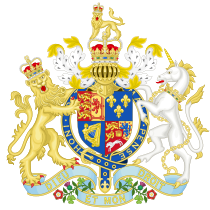In the aftermath of the Peterloo MassacreCavalry charge on 16 August 1819 into a crowd of 60,000–80,000 gathered at St Peter's Field, Manchester, England to demand the reform of parliamentary representation on 16 August 1819, the government of the United Kingdom introduced new legislation to deter future protests by what it regarded as dangerous radicals, those campaigning for a fairer system of parliamentary representation, and the activities of the radical press which supported them.[1] The crackdown was championed and overseen by the Tory Home Secretary Henry Addington, first Viscount Sidmouth.[2]
The historian Robert Reid has written that “it is not fanciful to compare the restricted freedoms of the British worker in the post-Peterloo period in the early nineteenth century with those of the black South African in the post-Sharpeville period of the late twentieth century”.[3] The six Acts of Parliament, hastily introduced in 1819, very soon proved to be counter-productive, provoking much opposition.[4]
The Acts
- The Unlawful Drilling Act 1819 (60 Geo. 3 & 1 Geo. 4. c. 1), made any person attending a meeting for the purpose of receiving training or drill in weapons liable to arrest and transportation.
- The Seizure of Arms Act (60 Geo. 3 & 1 Geo. 4. c. 2) gave local magistrates the powers to search any private property for weapons and seize them and arrest the owners.
- The Misdemeanours Act (60 Geo. 3 & 1 Geo. 4. c. 4) attempted to increase the speed of the administration of justice by reducing the opportunities for bail and allowing for speedier court processing.
- The Seditious Meetings Act (60 Geo. 3 & 1 Geo. 4. c. 6) required the permission of a sheriff or magistrate to convene any public meeting of more than 50 people, if the subject of that meeting was concerned with “church or state” matters. Only those living in the parish were allowed to attend such meetings.
- The Blasphemous and Seditious Libels Act (or Criminal Libel Act) (60 Geo. 3 & 1 Geo. 4. c. 8), toughened the existing laws to provide for more punitive sentences for the authors of such writings. The maximum sentence was increased to fourteen years’ transportation.
- The Newspaper and Stamp Duties Act (60 Geo. 3 & 1 Geo. 4. c. 9) extended and increased taxes to cover those publications which had escaped duty by publishing opinion and not news. Publishers were also required to post a bond for their behaviour.
The historian G. M. Trevelyan considered that “the most lasting injury to the community was done by the Newspaper and Stamp Duties Act imposing a four-penny stamp on all periodical publications”, reduced to a penny in 1836, before such taxes on knowledgeLong-running campaign against duties on newspapers, their advertising content and the paper they were printed on. finally vanished mid-century.[5]
This article may contain text from Wikipedia, released under the Creative Commons Attribution-ShareAlike License.

